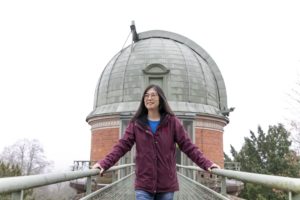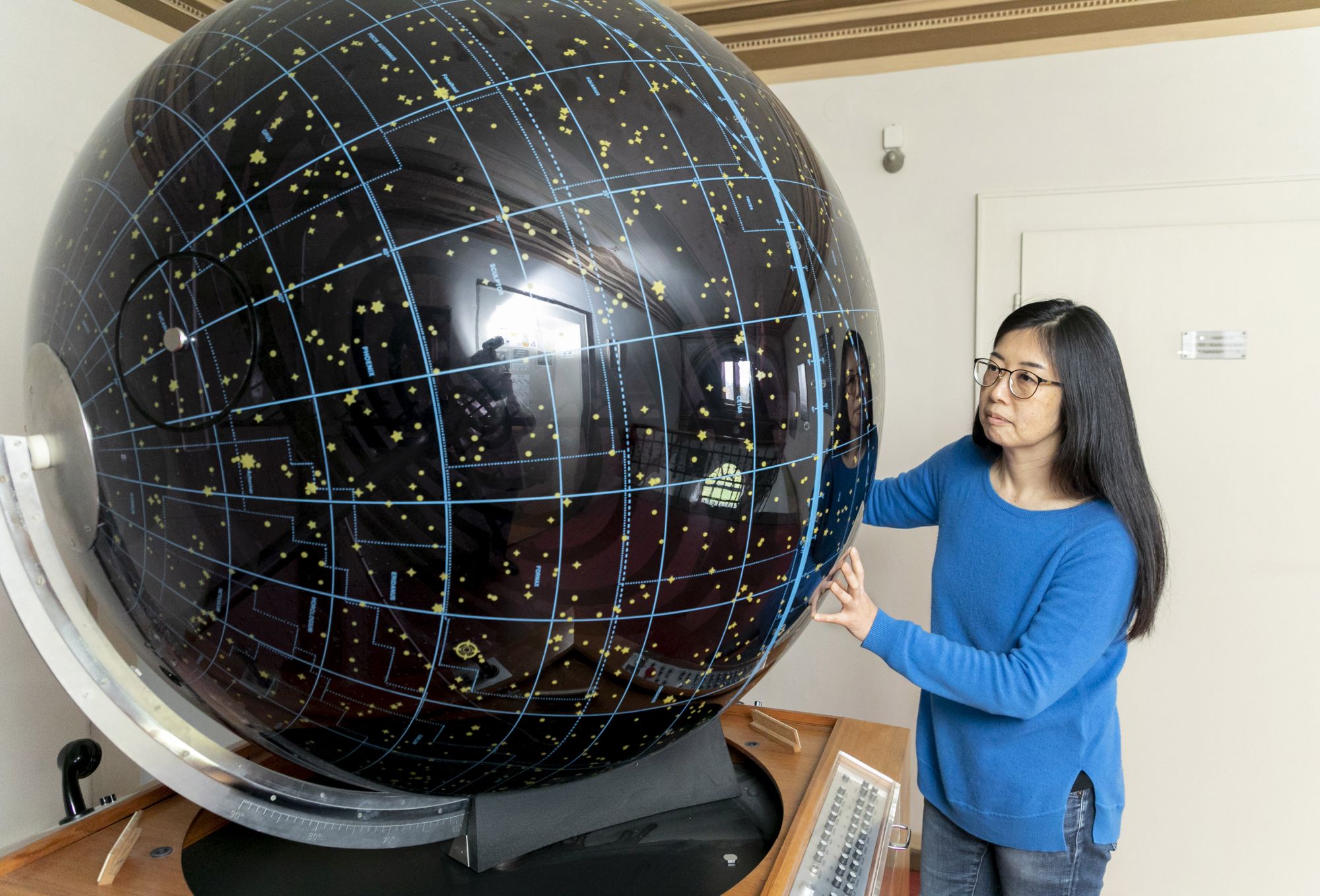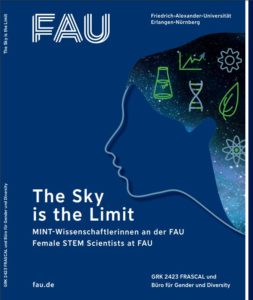An astrophysicist who originally wanted to become an astronaut
In our series of 22 reports, we present a panorama of female researchers from various qualification levels and academic positions, ranging from students to W3 professors. With their individual career paths, the female researchers in STEM subjects act as role models to encourage young female researchers to pursue an academic career, giving interesting insights into their careers to date. The MINT experts also share aspects of their private lives.
Professor Manami Sasaki: An astrophysicist who originally wanted to become an astronaut
On a hill high above the old town of Bamberg is the FAU Observatory, named after Dr. Karl Remeis, a jurist and an amateur astronomer. The observatory was established in 1889 as a private institution using funds from his estate, and was transferred to FAU in 1962. Today, it is home to the Astronomical Institute, affiliated to the Department of Physics. This is where the professor for multiwavelength astronomy, Prof. Dr. Manami Sasaki, carries out research into how galaxies develop: ‘I observe astronomical objects that are created when stars die, known as supernova remnants, but also nebulous structures in various galaxies.’
The stars are a prominent theme running through the three-storey villa on the Sternwartstraße where roughly four dozen researchers, doctoral candidates and students carry out their research. Models of planets, posters showing the Milky Way, measuring devices, antique chronometers and historical exhibits all clearly indicate that this is the home of astrophysics. An iron meteorite weighing roughly one kilogramme is showcased in a glass cabinet: ‘It has been proven to come from space,’ explains Manami Sasaki. Miniature satellites hang from the ceiling. One movable model planet demonstrates the phenomenon of a solar eclipse, and one of the offices has a wastepaper bin in the shape of a rocket.
Workplace reminiscent of working in a museum
From the professor’s window in the red brick villa, formerly the official residence for the directors, you can see the two distinctive domes of the Observatory. The various parts of the building are linked by a long corridor. Metre-long antique wooden telescopes are displayed along the way. One of them accompanied researchers from Bamberg over the sea to Africa on an expedition to observe the southern sky and Venus. The domes that can be opened and rotated also house huge optical telescopes, but these are now only used by groups of visitors, not for research purposes.
The data Manami Sasaki evaluates come from the NASA and ESA satellites as well as the eROSITA X-ray telescope that researchers from Bamberg were involved in designing. The data from space arrives at the Max Planck Institute (MPI) for Extraterrestrial Physics in Garching, where they are processed and forwarded to the various institutes, including Bamberg. Manami Sasaki, who studied in Heidelberg, completed her doctoral degree at the MPI in Garching in 2002. ‘In Germany, you have to study physics if you want to take astronomy,’ explains the researcher, who was born in Japan.

‘I liked science, not fiction’
At the age of eight she came to Germany with her parents, who had both studied music. She was fascinated by the night sky from childhood, and at the age of ten she decided to become an astronaut. She read a lot about space even then, but she was never interested in science fiction films like Star Trek or Star Wars.
After completing her doctoral degree, she spent several important and formative years as a postdoctoral researcher, including at the Harvard Smithsonian Center for Astrophysics. The scientist was already married at that time and had her first child, a son (who is now 16), during her research stay in the USA. ‘I took my time between finishing my doctoral degree and completing my postdoctoral thesis,’ explains Saski. Two years later, her
daughter was born. ‘It was important for me to spend my children’s early years with them and look after them myself. That is why I chose to stay at home for three years. I was lucky to have that option as part of my academic career.’ After completing her postdoctoral research, Manami Saski had to consider which career alternatives were open to her.

An academic career instead of NASA and ESA
As a highly-qualified astronomer, she could also have obtained a position at NASA or ESA. But she chose to stay at the university. As the head of an (Emmy-Noether) junior research group at the University of Tübingen, the young mother was able to start researching part time as of 2010. She could have stayed there and become a professor. However, she turned the position down and accepted a Heisenberg professorship at FAU that same year. She has since settled in Bamberg. She loves her rural workplace and the atmosphere in the historic town.
Do people still tend to confuse astronomy with astrology? ‘Oh yes, very often in fact, nevertheless they do actually overlap in some areas,’ says Manami Sasaki, who does not believe in horoscopes or believe that the constellation of the stars at our birth has any effect on us. ‘It has historically been proven that ancient cultures believed that the stars influenced the weather. And if
drought and famines struck, or floods came bringing disease in their wake, the people blamed it on the constellation of the stars, which was not wrong.’ It soon becomes clear that Prof. Sasaki is good at explaining and passing on her knowledge. She herself has the impression that in the male-dominated STEM subjects it is predominantly the female professors who automatically encourage more women into lectures and research, ‘and that is a positive trend.’
This article is part of the brochure “The Sky is the Limit”

Diverse, inspiring and innovative, the brochure “The Sky is the Limit” introduces female researchers in STEM subjects from the Faculty of Engineering and the Faculty of Sciences in a series of varied interviews.
Other interviews are available on the Research website.
Download the brochure “The Sky is the Limit — Female STEM scientists at FAU”
The publication is the result of collaboration between RTG 2423 FRASCAL and the Office of Equality and Diversity. Dr. Susanne Stemmler conducted the interviews.
